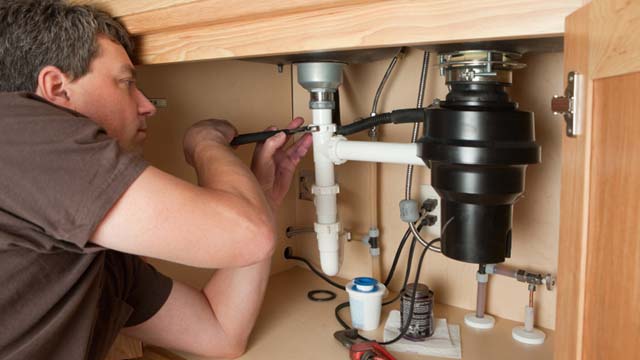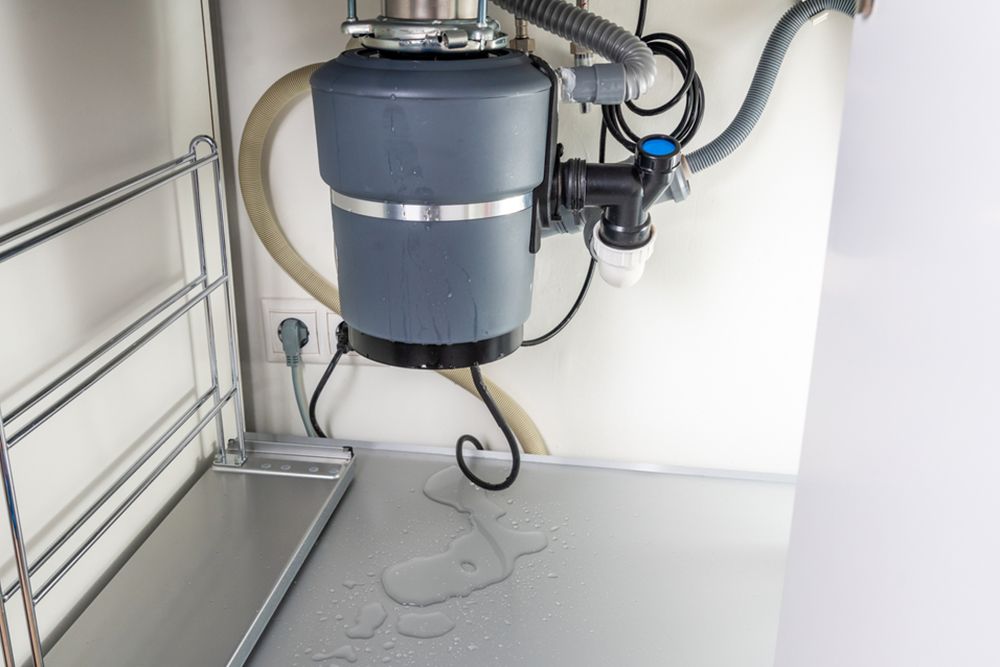Straightforward Steps to Stop a Leak in Your Garbage Disposal
Straightforward Steps to Stop a Leak in Your Garbage Disposal
Blog Article
This article below relating to Garbage Disposal Leaking From Bottom is amazingly enjoyable. Give it a go and make your own findings.

Garbage disposals are essential kitchen devices that help in getting rid of food waste successfully. Nonetheless, a dripping waste disposal unit can be a discouraging and untidy issue to manage. The good news is, lots of leakages can be dealt with conveniently with a couple of basic steps. In this write-up, we will go over just how to deal with a dripping waste disposal unit properly.
Introduction
Waste disposal unit are set up under kitchen area sinks and are made to shred food waste right into smaller items, allowing it to travel through the plumbing system easily. While these devices are usually reliable, leakages can take place in time because of wear and tear, loose links, or damage to the system.
Step-by-Step Guide to Taking Care Of a Leaking Waste Disposal Unit
Shut off the Power
Prior to trying any repairs, guarantee that the power to the garbage disposal system is turned off to prevent the danger of electrical shock.
Find the Leak
Identify the specific place of the leak and determine the reason
Tighten Connections
Use a wrench to tighten up any kind of loose connections between the disposal system and the plumbing system.
Change Seals or Gaskets
If the leakage results from used seals or gaskets, eliminate the old components and replace them with brand-new ones.
Patching Fractures or Holes
For cracks or holes in the disposal system, usage epoxy or an appropriate patching material to secure the broken location.
Recognizing the Source of the Leakage
Before attempting to deal with a dripping waste disposal unit, it is essential to identify the source of the leak. This can normally be done with aesthetic assessment or by conducting basic tests.
Visual Assessment
Evaluate the garbage disposal unit carefully for any signs of water leakage. Pay very close attention to areas around seals, gaskets, and connection factors.
Testing for Leaks
One way to evaluate for leakages is by running water through the disposal unit and checking for any type of noticeable signs of leak.
Usual Causes of Leakages in Garbage Disposals
Worn Seals and Gaskets
Seals and gaskets play a vital function in stopping water from dripping out of the waste disposal unit. Over time, these elements can degrade, leading to leakages around the disposal device.
Loose Connections
The links in between the waste disposal unit and the pipes system can end up being loose in time, triggering water to leakage out throughout operation.
Fractures or Holes in the Disposal Device
Physical damage to the garbage disposal, such as cracks or holes in the real estate, can also cause leaks.
Devices and Products Needed for Repairing a Dripping Garbage Disposal
Before beginning the fixing procedure, collect the essential devices and products, consisting of a screwdriver, adjustable wrench, plumber's putty, replacement seals or gaskets, and epoxy or patching material for repairing splits or holes.
Examining the Garbage Disposal After Repair Service
As soon as the fixing is total, check the garbage disposal by running water through it to guarantee that the leak has actually been dealt with.
Preventive Maintenance Tips to Avoid Future Leakages
To prevent future leaks, it is essential to carry out normal upkeep on your waste disposal unit. This includes keeping it tidy, preventing putting non-food items or tough items down the disposal, and regularly looking for leakages or other concerns.
Verdict
To conclude, fixing a leaking waste disposal unit is a reasonably simple procedure that can be completed with standard tools and products. By following the steps detailed in this article and practicing precautionary maintenance, you can keep your waste disposal unit in good working condition and avoid expensive repairs in the future.
What to Do About a Leaking Garbage Disposal
A leaking garbage disposal often goes unnoticed until you confront a sopping cabinet, a foul-smelling puddle, or an audible drip-drip-drip from the unit. The fix can be frustrating, too, because the leak can stem from a number of components in the system. Fortunately, with a little sleuthing, you can zero in on the leak and—depending on the exact location—stop the icky oozing and repair the component that caused it. Worst case scenario, if it turns out that the garbage disposal must be replaced, installing a new one is a reasonable do-it-yourself task for those with basic plumbing skills. Read on to keep the cash you’d otherwise hand over to a pro.
Prepare to find the leak
Prior to testing the garbage disposal for leaks, unplug it at the wall outlet and turn off the power from the breaker box to prevent electrical shock. Then insert a watertight sink stopper into your sink drain and wipe the unit dry with a clean cloth. In any handy container, mix a few drops of food coloring into a few cups of water, and pour the dyed water onto the sink stopper to help you locate the leak.
Investigate the source
the top, where the disposal meets the sink drain the side, where the dishwasher hose or main drain pipe connects to the disposal or the bottom of the unit Inspect each of these locations while gliding a light-colored rag over the unit; the dyed water will readily show on the rag and reveal the location of the leak. If a leak isn’t immediately apparent, remove the sink stopper and pour a few more cups of dyed water down the sink drain, then check for leaks again. Leaks near the top of the unit are more likely to show themselves while the sink is plugged, while side and bottom leaks are more noticeable while the sink is unplugged.
The metal sink flange that sits directly inside the sink drain is typically sealed around the top with plumber’s putty (a clay-like sealant) and then secured from under the sink with bolts. If the plumber’s putty deteriorates, or the bolts loosen, the flange can no longer form a watertight seal between the sink drain and the disposal—which could cause a leak at the top of the unit.
To reseal the leaky flange, you must first detach the garbage disposal. Start by loosening the screws securing the main drain pipe to the disposal, then loosen the screws in the metal clamp securing the dishwasher hose to the disposal and detach the drain pipe and dishwasher hose from the disposal. Loosen the screws in the mounting ring that connects the disposal to the metal mounting assembly beneath the sink, then pull down the disposal and carefully set it on a clean, dry surface. Loosen the bolts in the mounting assembly with a wrench, then pull down the mounting assembly and set it near the disposal.

Do you enjoy reading about Why Is ? Create a remark down below. We will be pleased to find out your views about this blog. In hopes to see you back again before long. Do you know another person who is interested by the subject? Please feel free to promote it. I enjoy reading our article about Why Is .
Go Services Report this page